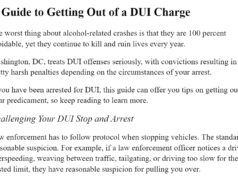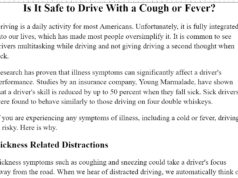SPONSORED CONTENT
America has yet to fully recover from the effects of the COVID-19 pandemic. Many service providers, including the vital supply chain transporting goods from manufacturers to consumer homes, have not fared better.
When a country lacks the people to supply goods within its borders, it will affect both manufacturers and consumers. To help alleviate the national driver shortage causing delays in the movement of goods from manufacturing factories to homes, legislators established the Safe Driver Apprenticeship Pilot (SDAP) program. The SDAP is especially important for motor carriers that traverse state lines and are experiencing a truck driver shortage.
“Even if there’s a shortage of truck drivers, it’s important for truckers to meet and follow safety guidelines to keep everyone safe on the road,” says Chong Ye, a motor vehicle accident attorney at The Ye Law Firm, Inc. P.S. “With proper adherance, the Safe Driver Apprenticeship Pilot program can help transport goods while prioritizing motorist safety.”
Why the Safe Driver Apprenticeship Pilot (SDAP) Program?
According to the American Trucking Associations (ATA), the United States has a shortfall of over 80,000 truck drivers, with predictions to expand to 160,000 by 2030. The driver shortage is causing supply chain disruptions, generating worry across the trucking industry.
To solve this issue, the legislators introduced the SDAP program. The initiative for introducing the program is to address the persistent driver shortage in the trucking industry by allowing Commercial Drivers License (CDL) holders between the ages of 18 and 20 to run interstate routes after completing the demanding apprenticeship program. The program overrides the federal law enacted in 1938, before the advent of the interstate highway system that prohibits CDL holders under the age of 21 from operating a commercial motor vehicle across state boundaries.
The program is one of the several efforts by the Biden administration to address the shortage of truck drivers by expanding the pool of eligible drivers to work in interstate trucking. As a result, truck drivers will have better working conditions, and the sector will have enough drivers to satisfy expanding freight demands. The program will also aid in reducing supply chain backlogs or disruptions while also providing a viable employment alternative for recent high school graduates.
The Driver and Motor Carrier Eligibility for the Program
The following are the eligibility conditions for drivers and TOR carriers participating in the test program, according to the federal register notice published by the Federal Motor Carrier Safety Administration (FMCSA):
#1. Driver Eligibility
Drivers aged 18 to 20 who currently have a CDL in their state are eligible for the program. The CDL holders must also meet specific requirements listed in the federal register notice to participate.
During the program, an apprentice who commits an offense, a serious traffic violation, a railroad-highway grade crossing violation, or a violation of an out-of-service order will be disqualified and expelled from the program. In addition, the pilot program can only accommodate 3,000 apprentices at any given time.
#2. Motor Carrier Eligibility
Motor carriers that want to be part of the program must fill out a participation application. Motor carriers must meet specific criteria listed in the federal register notice to be eligible for participation, along with a satisfactory safety rating and no active legal actions in the past six years.
Not having a driver and a vehicle Out of Service (OOS) rate over the national average are also part of the eligibility factors. In addition, the crash rate of the motor carriers must not be higher than the national average.
The Probationary Periods
The SDAP program involves two safety training probationary periods. They consist of a 120-hour probationary period and a 280-hour probationary period. An apprentice may transport goods over state lines during probationary periods but must be supervised by an experienced driver.
The FMCSA definition of an experienced driver is at least 26 years old CDL holder, with 5 years of interstate Commercial Motor Vehicle(CMV) experience. The driver must also be someone that has been employed for at least the past two years and has had no preventable accidents reportable to the agency or pointed driving violations. Also, trucks involved in the program must have an electronic-braking-crash-mitigation-system, a front-facing video, with a speed limit of 65 mph.
After completing both probationary periods, an apprentice can now traverse state lines without an accompanied driver in the passenger seat. At this point, the apprentice is still considered a participant in the SDAP program, according to the FMCSA, and their safety performance must be supervised by the employing motor carrier, in addition to the monthly safety performance reports submitted with FMCSA, until the driver reaches the age of 21.
Steps in the Probationary Period
The probationary period comes in two phases:
#1. The First Probationary Period
The first probationary period involves a compulsory completion of at least 120 hours of on-duty time, with at least 80 hours of that time spent driving a commercial motor vehicle. During this first period, the employing motor carrier must guarantee that the apprentice completes the necessary driving hours and is competent in the following areas:
- Interstate
- Traffic in the city
- Evening driving and a two-lane highway in the rural
- Awareness of safety
- Management of space and speed
- Controlling the lane
- Mirror scanning
- Left and right turns
- Keeping track of service hours and adhering to the rules
#2. The Second Probationary Period
After completing the 120-hour probationary period, the apprentice must subsequently complete the second probationary period. During the apprentice’s second probationary period, the apprentice must complete 280 hours of on-the-job training, including at least 160 hours of CMV driving. The employing motor carrier must guarantee that the apprentice finishes the required driving hours and is competent in the following areas:
- Close quarters maneuvering and backing
- Inspections carried out before the departure
- Procedures for fueling
- Load weighing
- Sliding tandems and weight distribution
- Processes for coupling and uncoupling
- Trip preparation, truck paths, and navigating systems
Data Collected by FMCSA
Throughout the program, the FMCSA will gather data on training provided to apprentices as part of the pilot to improve safety. In addition, statistics on the safety record of participating apprentices will be collected and compared to that of other CMV drivers.
Furthermore, the number of drivers who drop out of the program before the program completion; a comparison of drivers’ safety records before, during, and after each probationary period should also be part of the FMCSA data. Other data collected include comparing each participating driver’s average on-duty time, driving time, and time spent away from the home terminal.
The purpose of this data is for the FMCSA to compile it all and put it into a report. Then they will present it to Congress that examines teen drivers’ safety records and recommend whether they are as safe as drivers who are 21 or older. Congress might enact new legislation to expand the program.
Final Thought
Presently, a truck driver must be 21 years old to travel state lines in the United States with their cargo. This rule prevents many people from entering the profession, resulting in a truck driver shortage. With the SDAP program, many new truck drivers will join the industry to help alleviate severe truck driver shortages and supply chain backlogs.












![Saturday News: “Trump’s latest tariff TACO probably won’t make your life more affordable”; “The Epstein Email Cache: 2,300 Messages, Many of Which Mention Trump”; “[MTG] questions if Trump is still the ‘America First’ president”; “Jim Ryan tells all: ‘What did the Governor know, when did he know it?’”](https://bluevirginia.us/wp-content/uploads/2025/11/montage1115-100x75.jpg)
